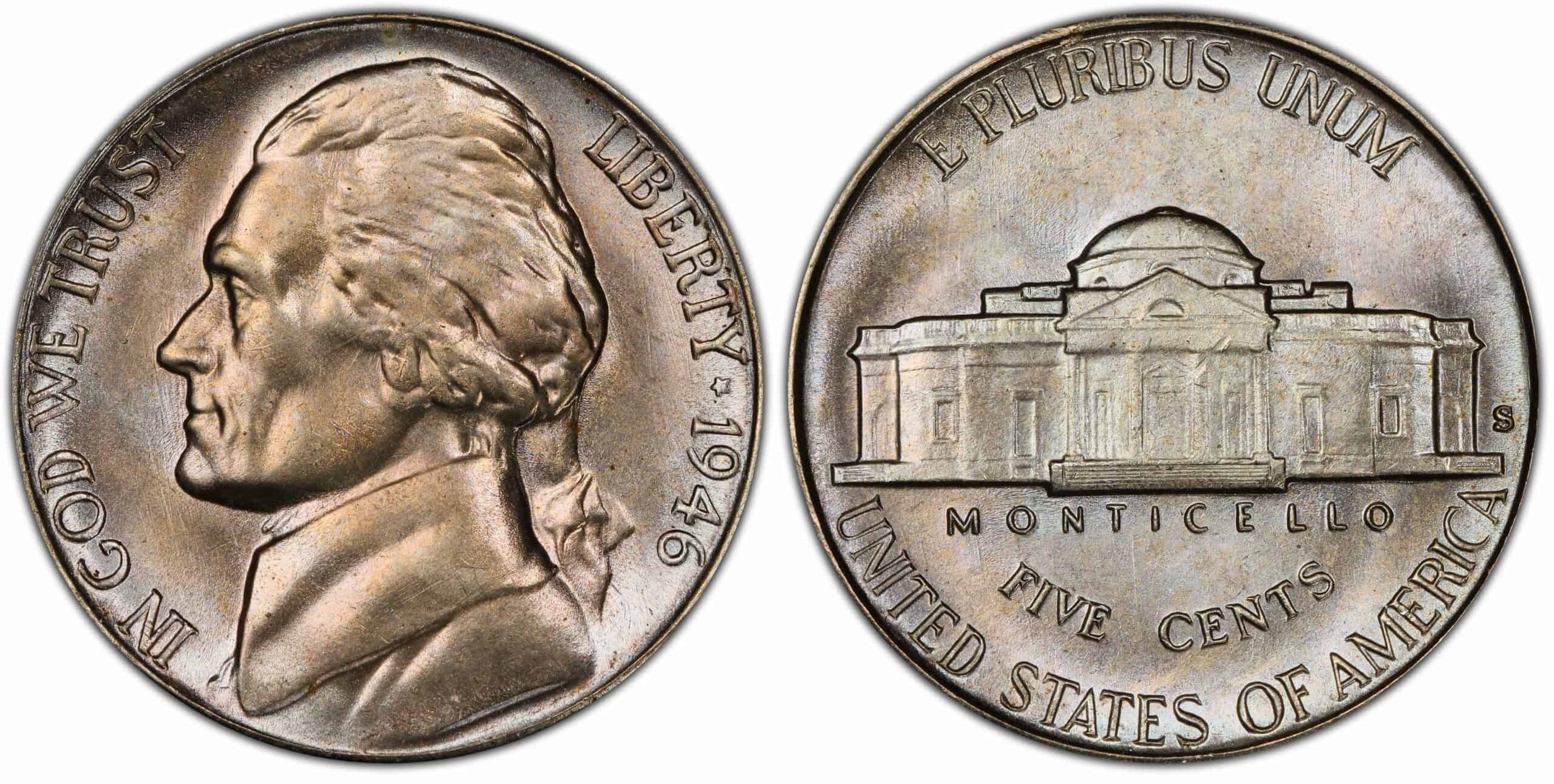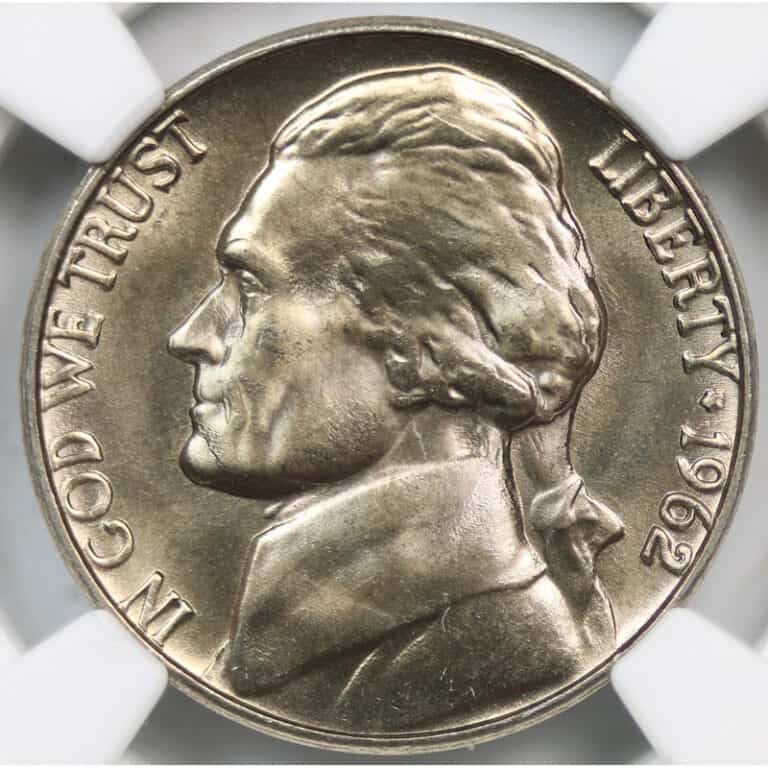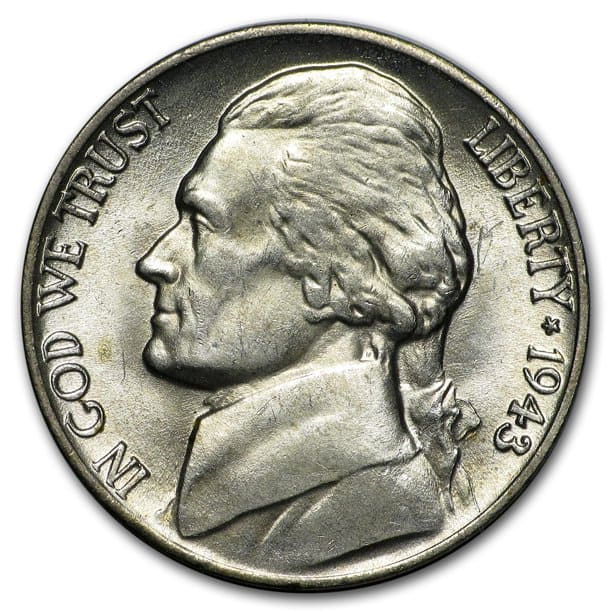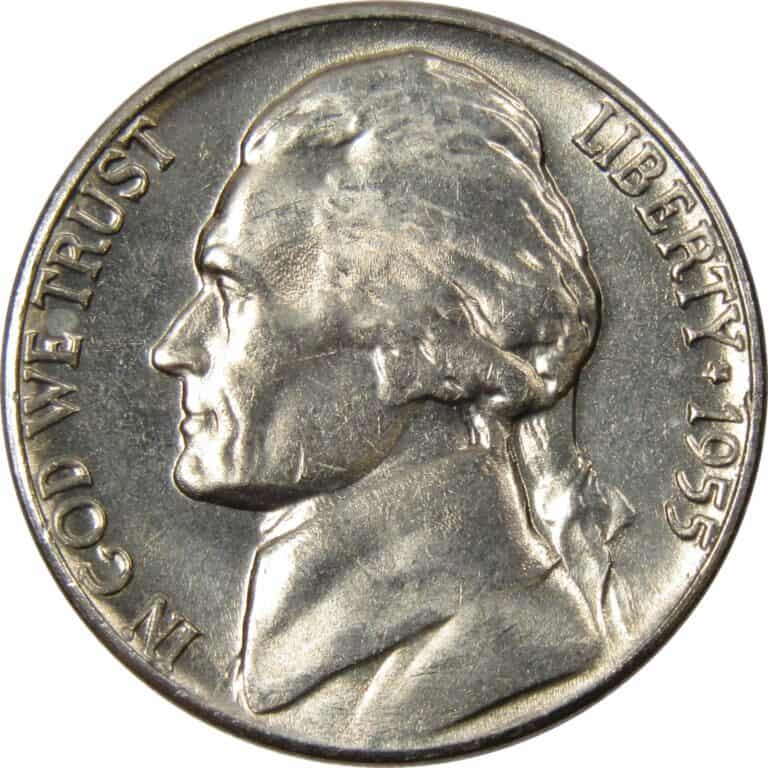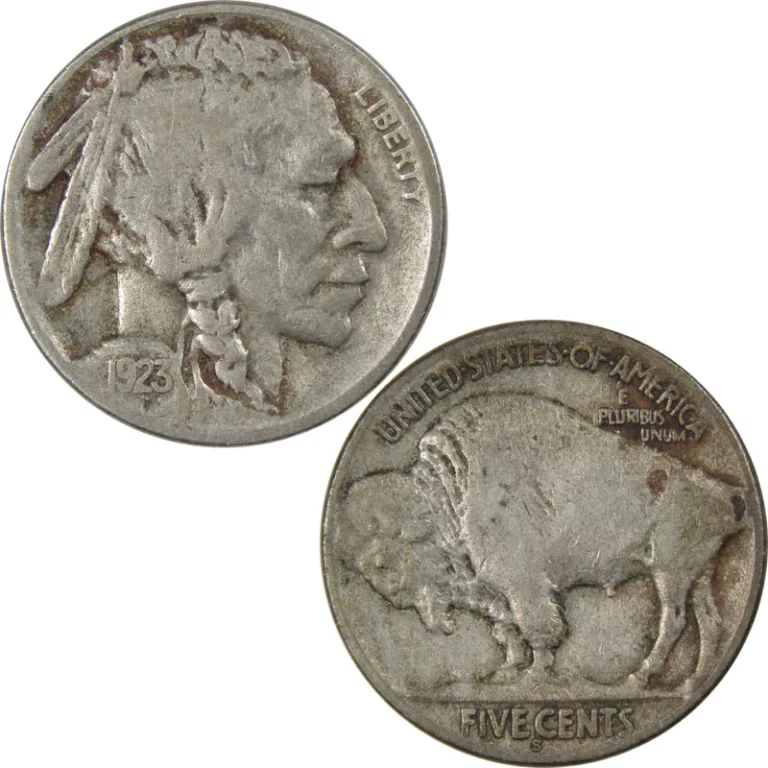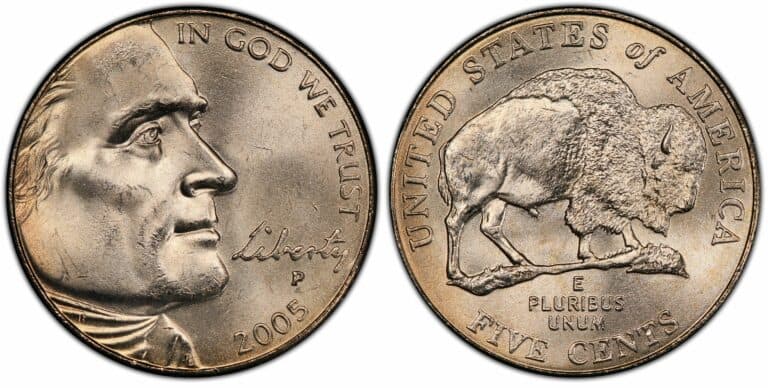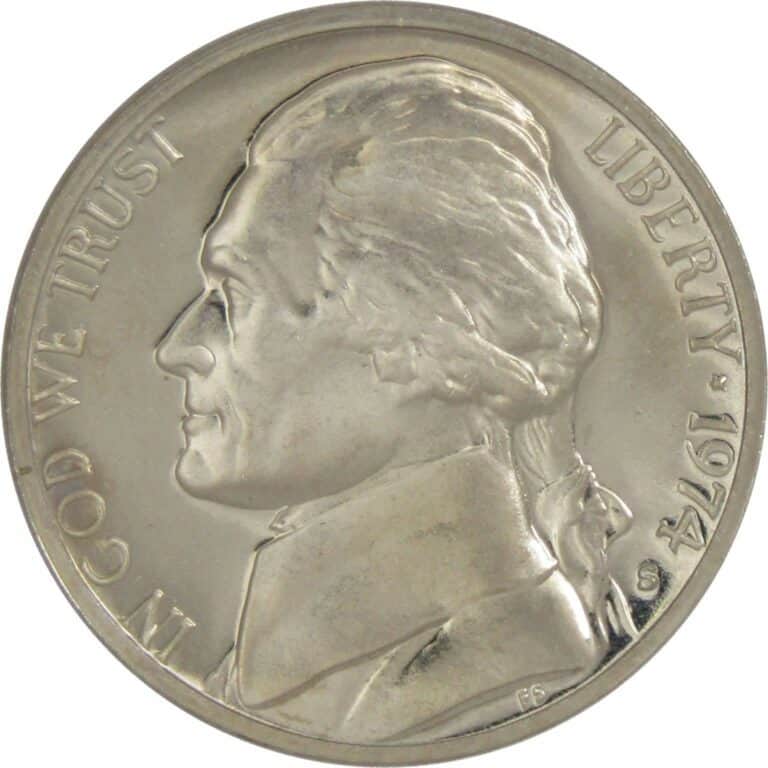1946 Nickel Value: How Much Is It Worth Today?
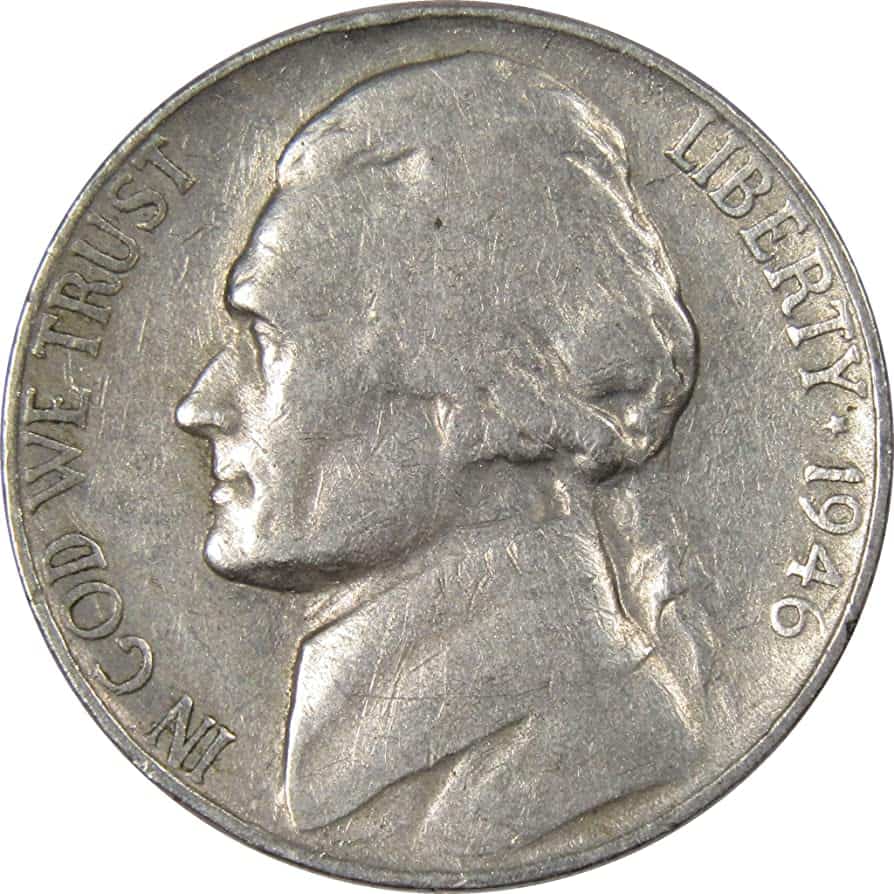
The 1946 nickel was minted after wartime, a period when nickels were made with 35% silver. Some of these planchets got included in circulation, resulting in the ‘birth’ of 1946 silver nickels.
Although this is the most infamous example of the 1946 nickel, it’s not the only interesting one. Below, we’ll explore the 1946 nickel value and errors, the likes of which could help you make a great deal of money.
Let’s start!
1946 Nickel Value Chart |
||||
| Mint Mark | Good | Fine | Extremely Fine | Uncirculated |
| 1946 No Mint Mark Nickel | $0.10 | $0.20 | $0.34 | $2.33-$17 |
| 1946 D Nickel | $0.10 | $0.20 | $0.46 | $3.38-$14 |
| 1946 S Nickel | $0.10 | $0.25 | $0.51 | $1.75-$13 |
1946 No Mint Mark Nickel Value
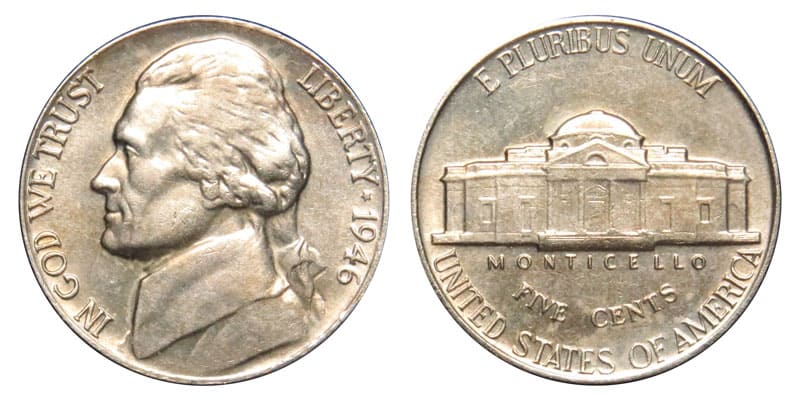
1946 no mint mark nickel is what’s known as a Jefferson nickel. It is named after the third US president Thomas Jefferson. Approximately 161,116,000 of these coins were minted in Philadelphia, which, out of the 3 locations, always makes the most number of currencies.
1946 nickels are made of 75% copper and 25% nickel and come with a weight of 5 grams. The plain-edged coin has a diameter of 21.2 mm and a thickness of 1.95 mm.
Design
In 1938, the 25-year run of the Buffalo nickel finally ended. There were a lot of issues with the creation of this coin, so the US Mint was more than happy to replace the outdated design. Furthermore, they don’t need to wait for Congress to authorize them to do so.
Incidentally, Thomas Jefferson’s birth bicentennial was on the horizon. So, to commemorate one of the country’s Founding Fathers, the US Mint dedicated the nickel in his honor.
As with the trend of the era, a competition was held to seek the best design. Thus began the US Mint Director Nellie Tayloe Ross’ search for the next coin designer.
Out of the 400 designers who sent in their entries, Felix Schlag emerged victorious. The German-born sculptor won $1,000 for his obverse design, which features Jefferson’s portrait. Many believe it was derived from the president’s bust in the Boston Museum of Fine Arts.
The president wasn’t the only design in Schlag’s coin, though.
On the left, you’ll find the motto “In God We Trust” On the right, you’ll notice the word “Liberty,” a small star, and the year 1946.
Schlag also took the honor of designing the reverse side of the coin. However, his first plan only depicted a part of Jefferson’s Monticello estate. The US Mint officials weren’t happy with this, so they asked the sculptor to revise his drawing.
The result is the reverse design we see on the 1946 nickel.
Central to the coin is the full image of the Monticello estate – including its name underneath.
The text on the top part reads ‘E Pluribus Unum,” while the lower part features “Five Cents” and “United States of America.”
Schlag’s initials were missing for most of the nickel’s circulation until the US Mint officials decided to include them in 1966.
Value
A 1946 no mint mark nickel in good condition is worth twice its face value – $0.10. The value is quadrupled for fine coins ($0.20), while extremely fine coins are valued at $0.34. Uncirculated currencies may sell for $2.38 to $17.
As always, high-grade 1946 nickels have been known to sell for premium prices. An MS 67 no mint mark nickel, for one, sold for $1,763. Its high value can be attributed to its original luster, normal strike, and one noticeable mark.
These nickels can sell for even more, especially if they have the full steps (FS) designation. This is given to coins where Monticello shows five or six full steps on the reverse side. Take the case of one MS 67 1946 nickel FS, which sold for a whopping $8,812.50 in an auction.
1946 D Nickel Value
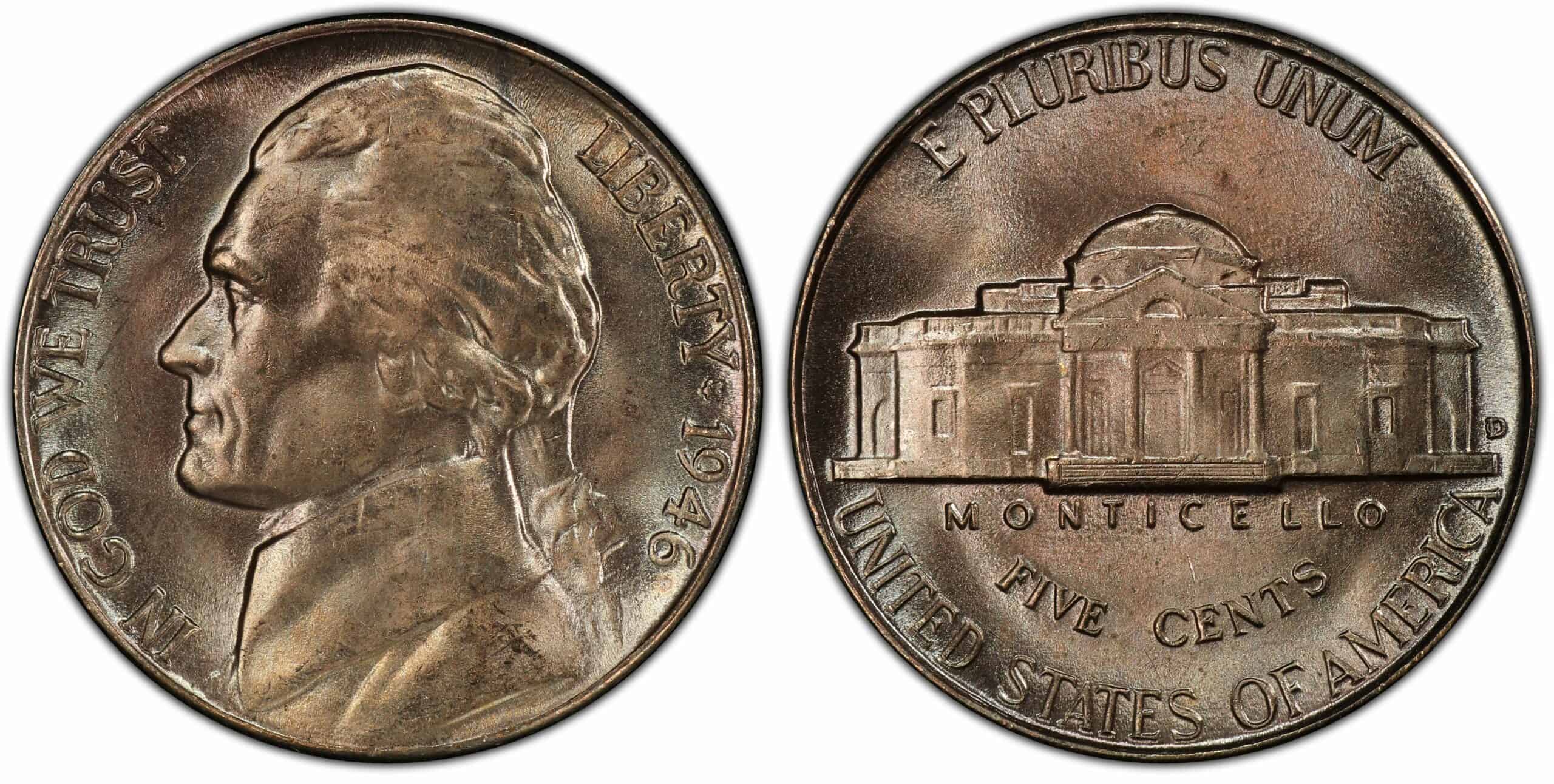
The Denver Mint produced 45,292,200 D nickels in 1946. While it’s less than half of what Philadelphia made, many of these coins remain in circulation.
Like the 1946 no mint mark nickel, these Denver-produced coins have a copper-nickel composition. Their dimensions are the same: a weight of 5 grams, a diameter of 21.2 mm, and a thickness of 1.95 mm.
Design
The 1946 nickel stars Thomas Jefferson, who was a prime design choice for the coin. For one, he is regarded as very influential in the birth of the US. He is the primary author of the Declaration of Independence, which he penned in his Philadelphia home from June 11-28, 1976.
He is also the first secretary of state and the second US vice president. More so, he took the honor of becoming the third president of the newly-independent country.
Jefferson’s profile is not the only star of the obverse, however. The front side also features the text “In God We Trust” and “Liberty,” words that are crucial to the American identity.
Likewise, the year of minting – 1946 – can be seen on the ‘heads’ part of the coin.
The reverse side, meanwhile, features the Monticello estate. The texts “E Pluribus Unum,” “Monticello,” “Five Cents,” and “United States of America” are imprinted on the coin as well.
In contrast to the no mint mark nickel, this coin has a “D’ letter on the right of the Monticello.
Value
The 1946 D nickel has a starting value of $0.10 (good) to $0.20 (fine). Extremely fine coins are worth more at $0.46, while uncirculated coins are valued at $3.38 to $14.
Like the no-mint mark nickel, high-grade coins sell for higher. For example, a 1946 D Jefferson nickel with an MS 67 grade sold for $1,265. Meanwhile, a coin with a full step designation was auctioned off for $8,625.
1946 S Nickel Value
The least quantity of nickels – 13,560,000 – were minted in San Francisco. Aptly so, it is named the 1946 S nickel – after its source location and mint mark.
Design
Thomas Jefferson, founding father and 3rd president of the US, is the ‘star’ of this coin. It features his profile in the front, alongside the official motto, “In God We Trust.” There’s also the word “Liberty,” as a replacement for the Lady Liberty that once starred on American coins.
Jefferson’s Monticello estate is proudly featured on the back. Located outside Charlottesville, Virginia, this 5,000-acre estate was his home – and final resting place.
The reverse also depicts the motto “E Pluribus Unum.” Latin for “Out of Many, One” this represents how the 13 colonies united into one single nation.
Monticello’s name is also included in the back, as well as the denomination label “Five Cents” and the country “United States of America.”
The San Francisco mint mark – S – can also be found on the right side of the mansion.
Value
Similar to the two previous currencies, a good-grade 1946 S nickel is worth $0.10. A fine-grade coin, however, is worth $0.25, while an extremely fine coin is worth more than double – $0.51.Uncirculated coins, however, are valued at a lower price – $1.75 to $13.
Again, high-grade nickels sell for a reasonable price in auctions. An MS 67 1946 S nickel has sold for $2,875. Meanwhile, a similar-grade coin with a full step designation was bought for $7,800.
1946 Nickel Value Grading
1946 nickels are graded according to their color, condition, and, notably, steps. As mentioned above, coins in mint state are consistently in demand.
The same goes for 1946 nickels with full steps on the reverse. They sell for as much as $8,812.50 – maybe more in the future.
Rare 1946 Nickel Error List
Anomalies make a coin more valuable. This is especially true for the 1946 nickel, as evidenced by the errors listed below:
1946 Nickel Double Die Obverse Error
The 1946 S nickel, as shown in this video, is known to have a double die obverse error. This happens when the die design is doubled during the hubbing process. This mistake is then transferred to the coin – the nickel, in this case.
A double die error will usually show defined details, such as two separate serifs at the end of the affected letter. The doubling will be pronounced at the same height as well.
1946 Nickel Double Die Reverse Error
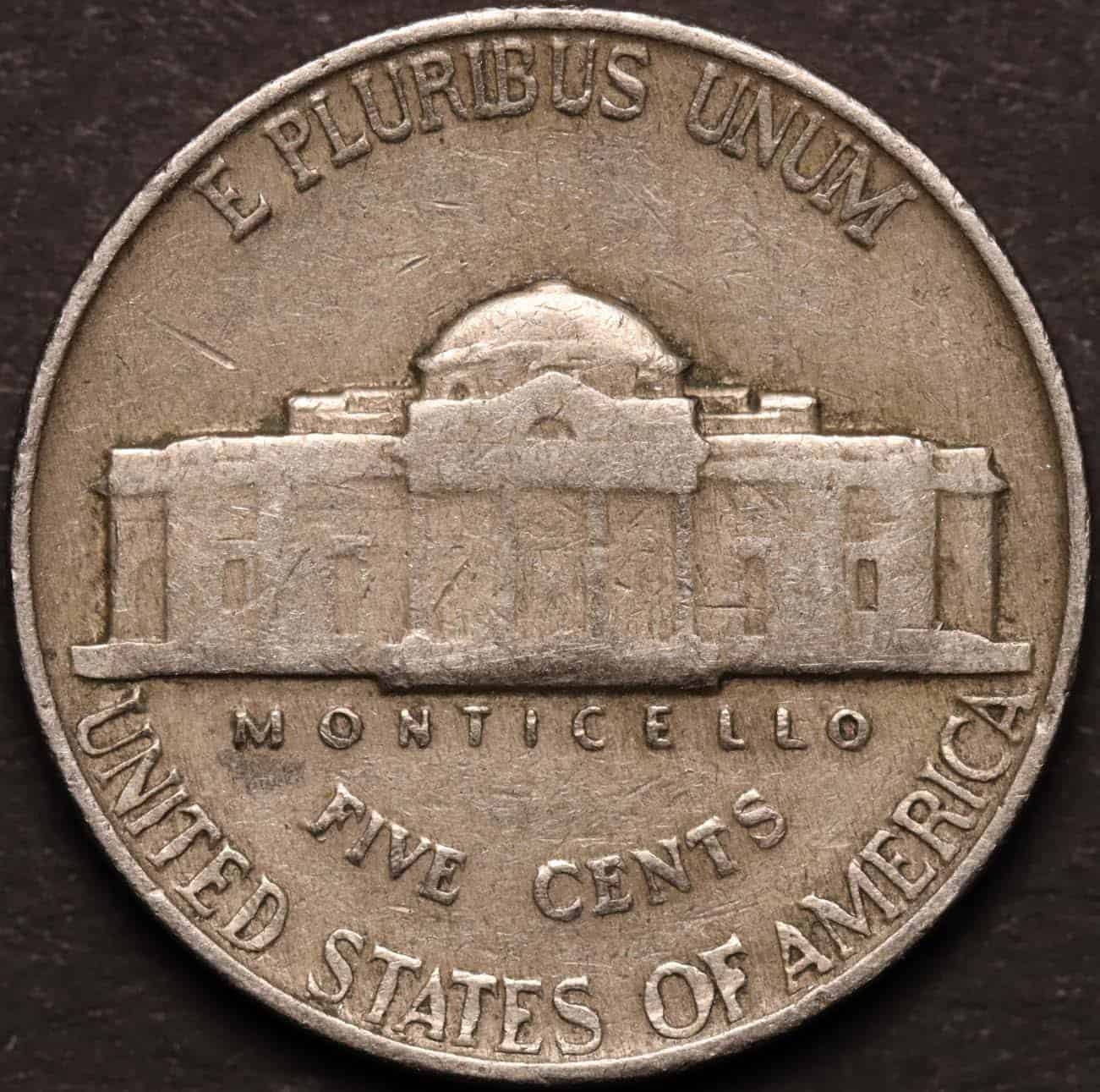
Again, this error happens due to a doubled die design. The only difference is it’s seen on the reverse side.
A coin with a DDR error will have doubling on some of the letters of “Monticello.”
The prices for this rare 1946 nickel range from $150 (MS 63) to $450 (MS 65.)
1946 Nickel Inverted Mint Mark Error
True to its name, this error is characterized by an inverted mint mark (IMM).
This error happened because they punched the D upside down initially. To correct this, the Mint worker had to punch the D again – this time, in the proper orientation.
An AU 53 coin, which has wear on 50% of the design and has 50% original luster left, has sold for $150. An MS 63 coin, which has a few deficiencies, is valued at $500.
An MS 65 coin, known for its high-quality luster and strike, was auctioned off for as much as $1,300.
1946 Nickel Over Mint Mark Error
This happens when one mint mark is punched on top of the other. In this case, the D letter is punched on top of the S.
This error can cost anywhere from $100 (AU 53) to $400 (MS 65.)
1946 Nickel Struck on a Silver Planchet
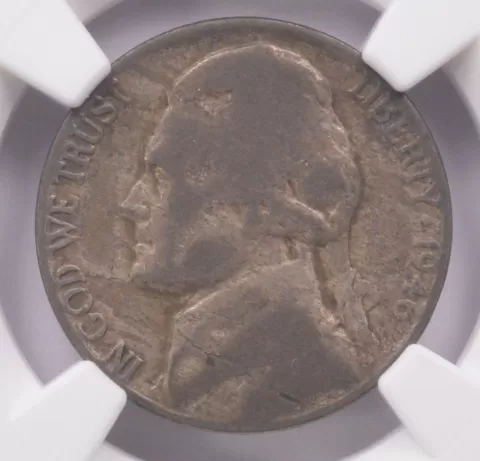
During wartime – from 1942 to 1945 – nickel was a strategic metal for the US military. So, instead of using this metal to make coins, the mint used 35% silver, 56% copper, and 9% manganese.
Once the war was over, the composition was reverted to 75% copper and 25% nickel in 1946.
Along the way, some silver planchets got mixed up with the copper planchets – and thus arose the 1946 silver nickels.
Only four such coins have been recognized so far, that’s why they’re sought after by many collectors.
1846 Nickel Value FAQs
What is the worth of a 1946 nickel?
The worth of a 1946 nickel is based on the following grades:
- Good – $0.10
- Fine – $0.20 to $0.25
- Extremely fine – $0.34 to $0.51
- Uncirculated – $1.75 to $17
How much is a 1946 nickel worth no mint mark?
A 1946 no mint mark nickel’s worth ranges from $0.10 (good) to $17 (uncirculated.)
Mint state coins are worth higher, with MS 67 coins selling for $1,763. Meanwhile, a mint state coin with a full step designation can sell for as much as $8,812.50.
How do I know if my 1946 nickel is silver?
Look at the color of the coin. Nickels made with 35% silver look darker or duller compared to coins made with copper and nickel.
The weight of both types of coins is the same at 5 grams, so weighing them is not a reliable method of determining which is which.
All in all, the best way to know if you have a 1946 silver nickel is to have it evaluated by a professional.
What is the melt value of a 1946 nickel?
The melt value of a 1946 nickel is $0.0632, which is significantly lower than its face value.
What is the error on the 1946 nickel?
There are many errors you can spot on the 1946 nickel. Great examples include:
- Double die error on the obverse or reverse side
- Inverted mint mark
- Over mint mark (example: D over S)
- Struck on a silver planchet (known as the 1946 silver nickel)
